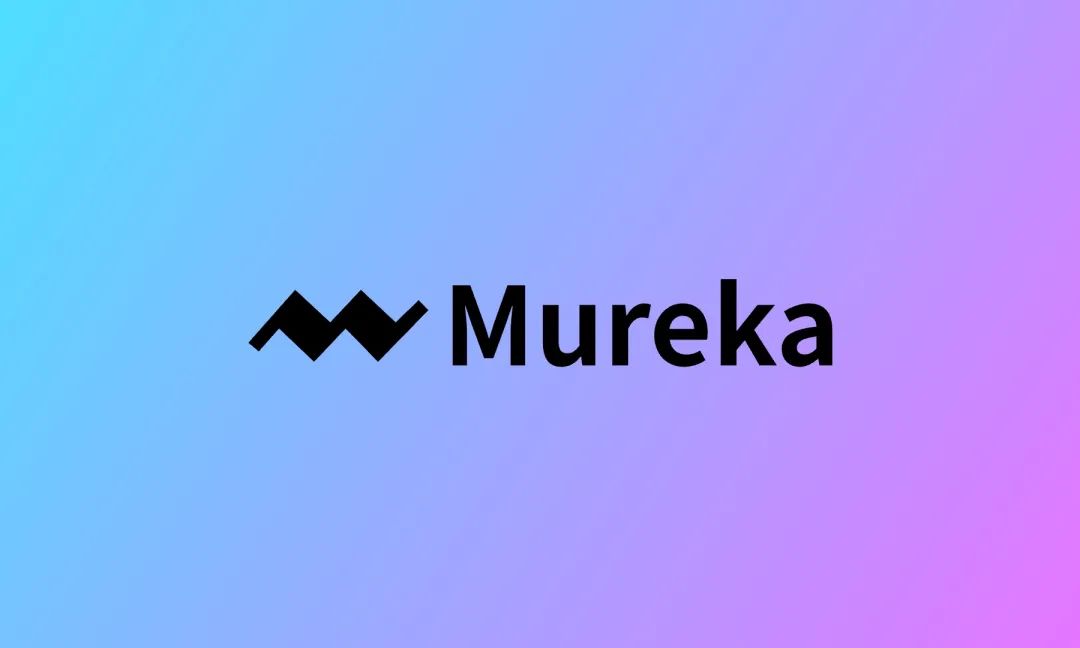
从个人机器人导师到人工智能工具,人工智能对课堂的初步入侵对于像萨姆·奥尔特曼(Sam Altman)这样的行业推动者来说是进步,是胜利,但对于许多警惕的老师来说,是一个令人担忧的新趋势。
教科书出版商麦格劳-希尔公司(McGraw Hill)常常要在两种不同观点之间找到平衡。该公司首席数据科学和人工智能官迪伦·阿雷纳(Dylan Arena)认为,这个历史可以追溯到计算器被发明出来的时候。
阿雷纳对于教育中的数据和科技这个话题有长期思考。他曾经是一名软件工程师,然后获得了学习科学(learning science)的博士学位,之后创办了一家公司,直到2021年加入麦格劳-希尔。该公司收购了他创办的聚焦于追踪幼儿发展的教育科技初创公司Kidaptive,。
麦格劳-希尔的公司历史起始于19世纪的贸易出版业,在这家传统的印刷公司里,阿雷纳的工作变得日益重要。
“从伴随我们成长的那些教科书的生产商,到今天的教育技术领导者,麦格劳-希尔走过了一段漫长的路程,”阿雷纳说。数字数据越来越多地成为麦格劳-希尔产品的一部分:在过去的25年中,其在线数学支持计划ALEKS成功地帮助了千万教师和家长了解学生的学习进展。
课堂上的剧变
然而,过去几年发生的种种事件愈发凸显出科技与教育结合的重要性。
新冠疫情使得更多数字教学工具被加速采用,但同时我们也看到,学生与同学和老师的人际关系对学习至关重要。
然后,就在一切似乎要重回正常轨道的时候,OpenAI发布了ChatGPT,让学校陷入一场恶性循环。
有了人工智能技术,学生比以往任何时候都更容易抄袭家庭作业,因此一些人担心这会妨碍学习。另一方面,教育工作者认识到,人工智能是学生们未来需要在工作中使用的重要技术。
一些教育科技公司迅速做出回应,试图以学校认可的形式利于这项技术。非营利组织可汗学院(Khan Academy)与OpenAI合作创建了名为Khanmigo的人工智能教学APP,已在美国各地的多个学区上线使用。人工智能初创公司Magic School也为孩子们创建了一个人工智能辅导APP,而教育技术公司Eduaide的人工智能产品则聚焦于帮助教师规划课程、生成测验和作业练习。
一些国家正在推动教育出版商迅速将人工智能整合到产品中。在韩国、新加坡和卢旺达等国家,供应商在投标价值数百万美元的教材和教辅出版合同时,人工智能辅导元素是一个竞标评分项。英国政府还发布了对人工智能教育工具资助的招标书。但在美国,小学和中学教科书的选用通常是在州一级甚至学区一级的基础上进行的,因此人工智能融入学习的步伐相对不均衡和缓慢。
作为一家市值数十亿美元的企业,麦格劳-希尔关心的不是能不能跟上人工智能(曾经迅猛,目前正在放缓的)的步伐,而是与苹果首席执行官蒂姆·库克(Tim Cook)的那句名言心有戚戚焉:不抢首发,而做最好。
正如阿雷纳所说:“我们的品牌信任度如此之高,对我们来说最大的风险不是在人工智能领域行动太慢,而是步伐太快。”

虚拟导师的局限性
阿雷纳特别怀疑任何声称生成式AI驱动的私人导师将取代人类教师的说法。他不只认为这项技术还不够强大,还担心AI聊天机器人无法给予学生恰当的挑战,因而不利于他们学习关键的社会技能,而这些技能也是学校教育的重要组成部分。关于是否能够完全将教育交由AI辅导APP,他说:“我们绝对不能这么做。”
他还会避免使用那些鼓励用户将聊天机器人人格化的工具。他担心未来每个孩子都有一个由LLM驱动的泰迪·鲁斯宾熊——一个能记住孩子最喜欢的童话故事、知道什么能让孩子悲伤或快乐的毛绒动物:“这会让他们在心理上待在幼儿园里出不来,他们看到其它小孩的时候会想:‘你们根本没有我的泰迪·鲁斯宾熊有意思。’”
这些担忧并非毫无根据。在萨姆·奥尔特曼关于生成式人工智能的宣言中,这位OpenAI首席执行官设想了一个繁荣的未来,每个孩子都有自己的虚拟导师,可以用任何语言,以学生需要的速度辅导任何学科。(同时,一个美国家庭起诉Character.ai公司导致其孩子深陷AI并自杀,指出了让青少年接触拟人化人工智能可能导致的许多潜在风险。
英国利物浦约翰摩尔斯大学(Liverpool John Moores University)教育学院讲师彼得·阿瑟顿(Peter Atherton)表示,人工智能有潜力成为个人学习助手,但需要合适的工具和适当的防护措施。他的研究聚焦教育科技,涵盖领域从课堂测验游戏Kahoot到将社交媒体和人工智能作为教育工具。他即将出版一本关于如何在学习过程中使用生成式人工智能的著作。
阿瑟顿指出:“我们正处于学习真正意义的范式转变的边缘,但还没有完全到达那里。”与阿雷纳一样,他认为人工智能应该成为加强学生与人类教师之间对话的工具,而不是让孩子们粘在电脑屏幕上。
随着人工智能教育的发展,阿瑟顿担心大型科技公司可能会利用其资源主导教育领域,而不考虑教师和学生作为最终用户的最佳利益。他指出,其中一个缺点是,这些工具往往会允许访问未经过滤的互联网,而专门的教育科技工具只会从经过批准和核实的信息源提取信息,并附带其他防护措施,例如确保没有种族主义或性别歧视的内容。还有一个问题是指导教师和学生如何使用新工具,并确保没有过多的新项目占据课堂。
人工智能教育的支持者经常将其框定为一种工具,可以帮助解决不平等问题,为那些父母在放学后或周末不能在身边辅导功课、或者那些无法负担课外辅导费用的学生提供个性化的辅导机会。它还可以帮助负担过重的贫困学区教师提高工作效率。然而,人工智能是否真的能以这种方式发挥作用在很大程度上取决于可及性——这仍然归结于金钱。学区需要资金来购买新的人工智能软件和数字教科书,学生和教师需要获得笔记本电脑、平板电脑或智能手机以及可靠的宽带连接,才能使用上这些新资源。
“这不是技术问题,而是学习问题”
2024年,麦格劳-希尔推出了两款面向课堂的通用人工智能工具,但两款工具都没有炫酷的界面或吸引人的名称。其中一款是面向高等教育的人工智能阅读器,另一款是面向中学生的写作助手。阿雷纳称,两款产品都于2024年8月推出,设计理念都是基于教师提供的输入内容。它们都能直接整合到学生已经熟悉的现有麦格劳-希尔工具上。
其中一款工具名为“AI Reader”(AI阅读器),可用于麦格劳-希尔出版社的150种数字书。学生可以借助它来分析让他们卡住的文本段落,对选中的文字进行重新表述。
老师们告诉麦格劳-希尔的研究人员,学生来教师办公室的一个常见原因是要求简化或重新表述课堂阅读材料,因此诞生了这款软件。
“这个功能主要不是技术问题,而是学习问题,”阿雷诺说。他将这款产品与学习中的建构主义理论联系起来,或者说,学习者不仅在吸收知识,更是通过与知识互动来构建自己的知识。
“当学生进行主动阅读时,如果他们无法理解文本,无法完全理解某个关键概念或某个特别的短语,他们就无法构建知识结构,”他说。
自推出以来,已有超过28,000名学生使用了该工具,早期数据显示,使用AI Reader的学生的阅读时间通常会增加50%。阿雷诺指出,这通常是一个好迹象,尽管现在判断是否存在因果关系还为时过早。
卢克·威廉姆斯(Luke Williams)是中央华盛顿大学(Central Washington University)的一名讲师,他在课堂上使用了该工具。他认为,从支持学生阅读到帮助教师设计课程,通用人工智能是高等教育的游戏规则改变者。然而他也指出,学术机构往往较晚采用炫酷的新技术。
威廉姆斯认为,虽然有些教授可能会推迟采用人工智能,但学生们已经在使用它了。他说:“重要的是采取一种有分寸的方法,同时对即将到来的一切保持好奇和开放的心态。”
除了AI Reader,麦格劳-希尔正在测试一款名为“Writing Assistant”(写作助理)的工具,在六至十二年级进行测试。它能做到人们可能预料到的事情——在学生完成作业时给予他们反馈。它能整合到麦格劳-希尔现有的两个数字工具里,即“Actively Learn”(主动学习)和“Achieve3000 Literacy”(实现3000识字)。
它的出现是为了节省教师的时间,在学生完成作业时,能为班上的每个学生提供个性化支持。阿雷诺解释说,Writing Assistant可以帮助学生实时整理写作的基本要素,如语法和标点符号,这样老师的反馈可以集中在学生的想法上。
但阿雷诺并没有假装它是解决聊天机器人泛滥问题的良药。
他补充道:“如果孩子们想要用ChatGPT,只需要打开一个标签就能使用ChatGPT了。”(财富中文网)
译者:珠珠
从个人机器人导师到人工智能工具,人工智能对课堂的初步入侵对于像萨姆·奥尔特曼(Sam Altman)这样的行业推动者来说是进步,是胜利,但对于许多警惕的老师来说,是一个令人担忧的新趋势。
教科书出版商麦格劳-希尔公司(McGraw Hill)常常要在两种不同观点之间找到平衡。该公司首席数据科学和人工智能官迪伦·阿雷纳(Dylan Arena)认为,这个历史可以追溯到计算器被发明出来的时候。
阿雷纳对于教育中的数据和科技这个话题有长期思考。他曾经是一名软件工程师,然后获得了学习科学(learning science)的博士学位,之后创办了一家公司,直到2021年加入麦格劳-希尔。该公司收购了他创办的聚焦于追踪幼儿发展的教育科技初创公司Kidaptive,。
麦格劳-希尔的公司历史起始于19世纪的贸易出版业,在这家传统的印刷公司里,阿雷纳的工作变得日益重要。
“从伴随我们成长的那些教科书的生产商,到今天的教育技术领导者,麦格劳-希尔走过了一段漫长的路程,”阿雷纳说。数字数据越来越多地成为麦格劳-希尔产品的一部分:在过去的25年中,其在线数学支持计划ALEKS成功地帮助了千万教师和家长了解学生的学习进展。
课堂上的剧变
然而,过去几年发生的种种事件愈发凸显出科技与教育结合的重要性。
新冠疫情使得更多数字教学工具被加速采用,但同时我们也看到,学生与同学和老师的人际关系对学习至关重要。
然后,就在一切似乎要重回正常轨道的时候,OpenAI发布了ChatGPT,让学校陷入一场恶性循环。
有了人工智能技术,学生比以往任何时候都更容易抄袭家庭作业,因此一些人担心这会妨碍学习。另一方面,教育工作者认识到,人工智能是学生们未来需要在工作中使用的重要技术。
一些教育科技公司迅速做出回应,试图以学校认可的形式利于这项技术。非营利组织可汗学院(Khan Academy)与OpenAI合作创建了名为Khanmigo的人工智能教学APP,已在美国各地的多个学区上线使用。人工智能初创公司Magic School也为孩子们创建了一个人工智能辅导APP,而教育技术公司Eduaide的人工智能产品则聚焦于帮助教师规划课程、生成测验和作业练习。
一些国家正在推动教育出版商迅速将人工智能整合到产品中。在韩国、新加坡和卢旺达等国家,供应商在投标价值数百万美元的教材和教辅出版合同时,人工智能辅导元素是一个竞标评分项。英国政府还发布了对人工智能教育工具资助的招标书。但在美国,小学和中学教科书的选用通常是在州一级甚至学区一级的基础上进行的,因此人工智能融入学习的步伐相对不均衡和缓慢。
作为一家市值数十亿美元的企业,麦格劳-希尔关心的不是能不能跟上人工智能(曾经迅猛,目前正在放缓的)的步伐,而是与苹果首席执行官蒂姆·库克(Tim Cook)的那句名言心有戚戚焉:不抢首发,而做最好。
正如阿雷纳所说:“我们的品牌信任度如此之高,对我们来说最大的风险不是在人工智能领域行动太慢,而是步伐太快。”
虚拟导师的局限性
阿雷纳特别怀疑任何声称生成式AI驱动的私人导师将取代人类教师的说法。他不只认为这项技术还不够强大,还担心AI聊天机器人无法给予学生恰当的挑战,因而不利于他们学习关键的社会技能,而这些技能也是学校教育的重要组成部分。关于是否能够完全将教育交由AI辅导APP,他说:“我们绝对不能这么做。”
他还会避免使用那些鼓励用户将聊天机器人人格化的工具。他担心未来每个孩子都有一个由LLM驱动的泰迪·鲁斯宾熊——一个能记住孩子最喜欢的童话故事、知道什么能让孩子悲伤或快乐的毛绒动物:“这会让他们在心理上待在幼儿园里出不来,他们看到其它小孩的时候会想:‘你们根本没有我的泰迪·鲁斯宾熊有意思。’”
这些担忧并非毫无根据。在萨姆·奥尔特曼关于生成式人工智能的宣言中,这位OpenAI首席执行官设想了一个繁荣的未来,每个孩子都有自己的虚拟导师,可以用任何语言,以学生需要的速度辅导任何学科。(同时,一个美国家庭起诉Character.ai公司导致其孩子深陷AI并自杀,指出了让青少年接触拟人化人工智能可能导致的许多潜在风险。
英国利物浦约翰摩尔斯大学(Liverpool John Moores University)教育学院讲师彼得·阿瑟顿(Peter Atherton)表示,人工智能有潜力成为个人学习助手,但需要合适的工具和适当的防护措施。他的研究聚焦教育科技,涵盖领域从课堂测验游戏Kahoot到将社交媒体和人工智能作为教育工具。他即将出版一本关于如何在学习过程中使用生成式人工智能的著作。
阿瑟顿指出:“我们正处于学习真正意义的范式转变的边缘,但还没有完全到达那里。”与阿雷纳一样,他认为人工智能应该成为加强学生与人类教师之间对话的工具,而不是让孩子们粘在电脑屏幕上。
随着人工智能教育的发展,阿瑟顿担心大型科技公司可能会利用其资源主导教育领域,而不考虑教师和学生作为最终用户的最佳利益。他指出,其中一个缺点是,这些工具往往会允许访问未经过滤的互联网,而专门的教育科技工具只会从经过批准和核实的信息源提取信息,并附带其他防护措施,例如确保没有种族主义或性别歧视的内容。还有一个问题是指导教师和学生如何使用新工具,并确保没有过多的新项目占据课堂。
人工智能教育的支持者经常将其框定为一种工具,可以帮助解决不平等问题,为那些父母在放学后或周末不能在身边辅导功课、或者那些无法负担课外辅导费用的学生提供个性化的辅导机会。它还可以帮助负担过重的贫困学区教师提高工作效率。然而,人工智能是否真的能以这种方式发挥作用在很大程度上取决于可及性——这仍然归结于金钱。学区需要资金来购买新的人工智能软件和数字教科书,学生和教师需要获得笔记本电脑、平板电脑或智能手机以及可靠的宽带连接,才能使用上这些新资源。
“这不是技术问题,而是学习问题”
2024年,麦格劳-希尔推出了两款面向课堂的通用人工智能工具,但两款工具都没有炫酷的界面或吸引人的名称。其中一款是面向高等教育的人工智能阅读器,另一款是面向中学生的写作助手。阿雷纳称,两款产品都于2024年8月推出,设计理念都是基于教师提供的输入内容。它们都能直接整合到学生已经熟悉的现有麦格劳-希尔工具上。
其中一款工具名为“AI Reader”(AI阅读器),可用于麦格劳-希尔出版社的150种数字书。学生可以借助它来分析让他们卡住的文本段落,对选中的文字进行重新表述。
老师们告诉麦格劳-希尔的研究人员,学生来教师办公室的一个常见原因是要求简化或重新表述课堂阅读材料,因此诞生了这款软件。
“这个功能主要不是技术问题,而是学习问题,”阿雷诺说。他将这款产品与学习中的建构主义理论联系起来,或者说,学习者不仅在吸收知识,更是通过与知识互动来构建自己的知识。
“当学生进行主动阅读时,如果他们无法理解文本,无法完全理解某个关键概念或某个特别的短语,他们就无法构建知识结构,”他说。
自推出以来,已有超过28,000名学生使用了该工具,早期数据显示,使用AI Reader的学生的阅读时间通常会增加50%。阿雷诺指出,这通常是一个好迹象,尽管现在判断是否存在因果关系还为时过早。
卢克·威廉姆斯(Luke Williams)是中央华盛顿大学(Central Washington University)的一名讲师,他在课堂上使用了该工具。他认为,从支持学生阅读到帮助教师设计课程,通用人工智能是高等教育的游戏规则改变者。然而他也指出,学术机构往往较晚采用炫酷的新技术。
威廉姆斯认为,虽然有些教授可能会推迟采用人工智能,但学生们已经在使用它了。他说:“重要的是采取一种有分寸的方法,同时对即将到来的一切保持好奇和开放的心态。”
除了AI Reader,麦格劳-希尔正在测试一款名为“Writing Assistant”(写作助理)的工具,在六至十二年级进行测试。它能做到人们可能预料到的事情——在学生完成作业时给予他们反馈。它能整合到麦格劳-希尔现有的两个数字工具里,即“Actively Learn”(主动学习)和“Achieve3000 Literacy”(实现3000识字)。
它的出现是为了节省教师的时间,在学生完成作业时,能为班上的每个学生提供个性化支持。阿雷诺解释说,Writing Assistant可以帮助学生实时整理写作的基本要素,如语法和标点符号,这样老师的反馈可以集中在学生的想法上。
但阿雷诺并没有假装它是解决聊天机器人泛滥问题的良药。
他补充道:“如果孩子们想要用ChatGPT,只需要打开一个标签就能使用ChatGPT了。”(财富中文网)
译者:珠珠
AI’s incipient invasion of the classroom, from personal robo-tutors to AI-powered tools, is a triumph of progress to industry boosters like Sam Altman—and a worrisome new trend to many wary teachers.
For McGraw Hill, the publisher of educational textbooks, finding a balance between the two diverging views is nothing new. The tension dates back to the invention of the calculator, says Dylan Arena, chief data science and AI officer at McGraw Hill.
Arena has long thought about data and technology in education. He was a software engineer, then a learning science PhD, then a startup founder, before he joined McGraw Hill in 2021. The company had acquired Kidaptive, his ed-tech startup for tracking early childhood development.
His current job is an increasingly important one at a company with roots in traditional printing, dating back to 19th-century trade publishing.
“It’s a long journey from that company that made those textbooks that we grew up with to the sort of ed-tech leader that we are today,” Arena says. Digital data has increasingly been part of the McGraw Hill product offering: For the past 25 years, its online math support program, ALEKS, has given teachers and parents insight into a student’s progress.
Upheaval in the classroom
It’s the events of the past few years, however, that have really underscored the importance of getting it right when it comes to technology and education.
The COVID-19 pandemic spurred the uptake of more digital teaching tools. But it was also a reminder that human relationships that students have with their classmates and their teachers are essential to learning.
Then, just as things seemed set to return to normal, OpenAI released ChatGPT and sent schools into a spiral.
AI technology has made it easier than ever for students to plagiarize homework and as a result, some fear, to sabotage their own learning. On the other hand, educators recognize that AI is an important technology that pupils will one day need to use in the workplace.
Some ed-tech companies have been quick to respond with attempts to rein in the technology in the form of school-sanctioned tools. The nonprofit Khan Academy partnered with OpenAI to create Khanmigo, an AI teaching app that it has rolled out to school districts across the U.S. Magic School, an AI startup, has also created an AI tutoring app for kids, while education technology company Eduaide has geared its AI offerings more toward supporting teachers in planning lessons and producing quizzes and homework worksheets.
Some countries are pushing educational publishers to integrate AI rapidly into their product offerings. South Korea, Singapore, and Rwanda are among the nations that have asked companies bidding on multimillion-dollar contracts to supply textbooks and other educational materials to their school systems to include AI tutoring elements as part of those bids. The U.K. government also has put out requests for proposals for funding for AI education tools. But in the U.S., where primary and secondary school textbook choices are often made on a state by state or even school district by school district basis, the pace of AI integration into learning is more uneven and halting.
For McGraw Hill, a multibillion-dollar enterprise, the concern isn’t about keeping up with the (once rapid, now slowing) pace of AI scaling. It echoes the mantra of Apple CEO Tim Cook: not first, but best.
“Our levels of brand trust are so high that the greatest risk for us is not moving too slowly on AI, it’s moving too fast on AI,” as Arena puts it.
The limits of virtual tutors
Arena is particularly skeptical of any claims that generative AI–powered personal tutors will ever replace human teachers. It’s not just that he thinks the tech isn’t capable enough. He worries that AI chatbots won’t challenge students properly, and that it will discourage them from learning key social skills that are also a vital part of what schools teach. “We should absolutely not be doing that,” he says of turning education over completely to AI tutoring apps.
He also avoids tools that encourage users to personify a chatbot. He fears a future where every child has a Teddy Ruxpin bear powered by an LLM—a stuffed animal that remembers its child owner’s favorite stories and what makes them laugh or cry: “That just might set them onto a track where they go into kindergarten, and they look at the real kids, and they’re like, ‘Oh, you guys aren’t anywhere near as cool as my Teddy Ruxpin.’”
Those fears aren’t unfounded. In Sam Altman’s manifesto on generative artificial intelligence, the OpenAI CEO envisioned a prosperous future in which every child has a personal virtual tutor for every subject, in any language, working at whatever pace the student needs. (Meanwhile, a family’s lawsuit against Character.AI following their teen’s suicide points to the many unknowns and potential risks of exposing young people to AI personalities.)
There is potential for AI as a personal learning assistant, but only with the right tools and appropriate guardrails, says Peter Atherton, a lecturer in the school of education at Liverpool John Moores University in the U.K. His research covers ed tech, from the classroom quiz game Kahoot to social media and AI as educational tools. His forthcoming book is about how to use gen AI in the learning process.
“We’re on the precipice of a paradigm shift with what learning really is, and we’re not quite there yet,” Atherton notes. Like Arena, he sees AI working as a tool to enhance the dialogue between students and their human teachers, rather than a way to keep kids tied to computer screens.
As the AI ed-tech space develops, Atherton fears that Big Tech companies could use their resources to dominate the education space, without considering what’s best for teachers and students as end users. One drawback, he notes, is that those tools tend to unleash access to the unfiltered internet, whereas specialized ed-tech tools are engineered to draw information only from approved, verified sources and come complete with other guardrails to, for instance, ensure they aren’t generating racist or sexist content. There’s also the question of instructing both teachers and students in how to use the new tools and ensuring there’s not an overflow of new programs taking over the classroom.
Proponents of AI’s use in education often frame it as a tool that could help address inequality, giving students whose parents might not be around after school or on weekends to help with homework assignments and whose families can’t afford to pay for human tutoring the chance to have personalized learning assistance. It could also help overburdened teachers in poorer school districts to work more productively. But, of course, whether AI actually functions in this way greatly depends on access—which still comes down to money. Districts need funds to purchase the new AI-enabled software and digital textbooks, and students and teachers need access to laptops, tablets, or smartphones and reliable broadband connections to use the new resources.
‘Not a technology thing, it’s a learning thing’
This year, McGraw Hill rolled out its first two gen AI tools for the classroom, and neither comes with a flashy interface or a friendly name. There’s an AI Reader for higher ed, and the Writing Assistant for middle and high schoolers. Both launched in August and were created with input from teachers, Arena notes. Both are built right into existing McGraw Hill tools that the students are already familiar with.
The AI Reader is enabled on 150 of McGraw Hill’s digital titles. A student can prompt it to analyze a passage of text that they’re stuck on, and the AI Reader will rephrase the highlighted section.
It was created after instructors told McGraw Hill researchers that students are often coming to office hours to ask for a simplification or reframing of what was covered in class readings.
“The feature is primarily not a technology thing, it’s a learning thing,” Arena says. He ties it to the theory of constructivism in learning, or the idea that learners don’t just absorb knowledge, they build it by interacting with it.
“When students are doing active reading, if they can’t access the text, if they can’t quite get this key concept or this weird phrase or whatever, they can’t build that knowledge structure,” he says.
More than 28,000 students have used the tool since it launched, and early data shows that students who use AI Reader tend to spend 50% more time with their reading. That’s generally a good sign, although it’s too soon to tell if there’s a causal relationship, Arena notes.
Luke Williams, a lecturer at Central Washington University, used the tool in his class. He sees gen AI as a game changer for higher education, from supporting student readings to helping instructors design courses. Still, he notes that academic institutions tend to be later adopters of flashy new tech.
And while some professors might be putting off AI adoption, their students are already using it, Williams notes. “It’s important to take a measured approach, but also an approach that is curious and open-minded to what’s coming,” he says.
On top of the AI Reader, McGraw Hill is testing a tool known as Writing Assistant with a limited crowd of sixth- through 12th-grade classrooms. It does what one might anticipate—giving budding writers feedback on their assignments as they’re doing them. It’s embedded in two of McGraw Hill’s existing digital tools, the Actively Learn and Achieve3000 Literacy programs.
It’s meant to save teachers time on the tough task of giving every student in their class individual support as they all work on an assignment. The Writing Assistant helps students sort out the building blocks of writing, like grammar and punctuation, in real time, so the teacher’s feedback can focus on a student’s ideas, Arena explains.
But Arena doesn’t pretend it’s an antidote to the plethora of chatbots out there.
“If the kids want ChatGPT, they can just open a tab and use ChatGPT,” Arena adds.





